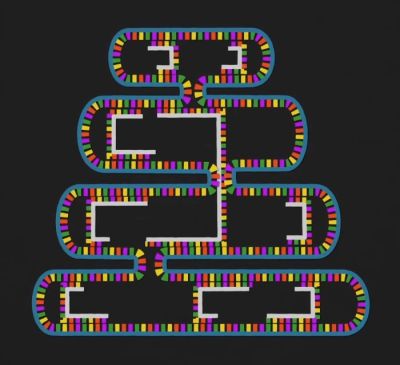Mechanical actions underlie much of what makes modern day society function, whether it’s electric motors, combustion engines, switches, levers, or the springs inside a toy blaster gun that propel foam darts at unsuspecting siblings. Yet as useful as it would be to scale such mechanisms down to microscopic levels, this comes with previously minor issues on a macroscopic scale, such as friction and mechanical strength, becoming quickly insurmountable. Or to put in more simple terms, how to make a functioning toy blaster gun small enough to be handled by ants? This is the topic which [Mark Rober] explores in a recent video.
The answer is to use a single structure that comprises not only the frame of the blaster, but also the spring mechanism that stores the mechanical energy and the trigger mechanism. This is referred to as a compliant mechanism (CM), and [Mark] collaborated with Brigham Young University (BYU) and its Compliant Mechanism Research group in order to design a suitable CM for an ant-sized blaster gun. After a few design iterations a version was created that’s also been released on Thingiverse as STL files.

Naturally, this version can be created fairly easily by anyone who has access to an FDM or SLA 3D printer, but where things get interesting is when the model gets scaled down further and created out of carbon nanotubes (CNTs). This CNT version is pictured in the image at the top, and can only be manipulated using precision instruments as shaky mammalian hands would utterly destroy it. Even so, if used correctly, it can still shoot a projectile just like its much larger brethren.
Upping the ante even further is the self-assembling version out of DNA. For this scanning tunneling microscope-sized version of the outline of the blaster, [Mark] went to the Salk Institute for Biological Studies. Named after the famous Jonas Salk, this institute is at the forefront of biomedicine, following in the footsteps of Dr. Salk.
Here is where Salk Institute researchers demonstrated a technique where one side of a DNA chain can be selectively supported with supports that are coated with matching ACGT molecules. When added together in a solution, these will self-assemble into a structure that does absolutely not match the famous DNA helix shape, but can instead be used to create structures at will, possibly even compliant mechanisms that can one day be used in medical science.
Although it’s hard to say when our T-cells will be using molecule-sized blaster guns to take out threats, or medicine delivered with tiny darts from nanobots, there’s a good chance that some form of compliant mechanism will be involved.

















Yowsah, fascinating, I wonder if we could exploit this for self operated dentistry :-)
Thanks for posting
And history records the beginnings of the Borg.
I was very much under the impression that the youtube channel creator, Mark, was the designer of most of the things he shows (the glitter packages and such) – turns out (all? most all?) that was work done by someone else. Going back an re-watching the prank videos, he sure lets you think that he created it – so it’s nice to see on this video he’s showing more behind the scenes of the making of things and the people doing it.
Makes sense given how he presents himself, more as a very social person that is good at celebrating and presenting things, but also quite focused on the people, and using the projects more as a means to socialize. Usually this and designing things don’t mix well together, as people who design things often keep the thoughts about future or current projects in their minds. And it shows in general behavior.
Sean Hodgins was working on the first glitter bombs, has put lots of energy into it and I first watched his video and then Marks and from that day on I had a little grudge.
The smallest two guns weren’t functional. Still impressive, but they don’t count as guns to me.
The looked real enough that if you took them into a micro- or nano-scale bank you would get in trouble…
I’m pretty sure the clerk at the sperm bank won’t call the police if you try to use your DNA Nerf gun to attack them. But who knows?
There was a commercial for glasses made around 1990’s or 2000’s, in South-Asia, with robbers with bad eye sight that were robbing a dna-bank and found no money, but strange looking yogurt glass jars. While police looked at them via security cameras. And I end it here, yet the commercial goes on towards the conclusion. And it is what you are thinking.
I agree,
The 10x and 100x miniaturization appear convincinly valid and are an impressive achievement on their own.
He loses credibility, claiming that the even smaller creations are also a nerf guns.
What is this, a blaster for … oh, carry on, then.
Like 95% positive I saw this exact compliant mechanism like last year – will try to dig up the paper but remember being pretty impressed.